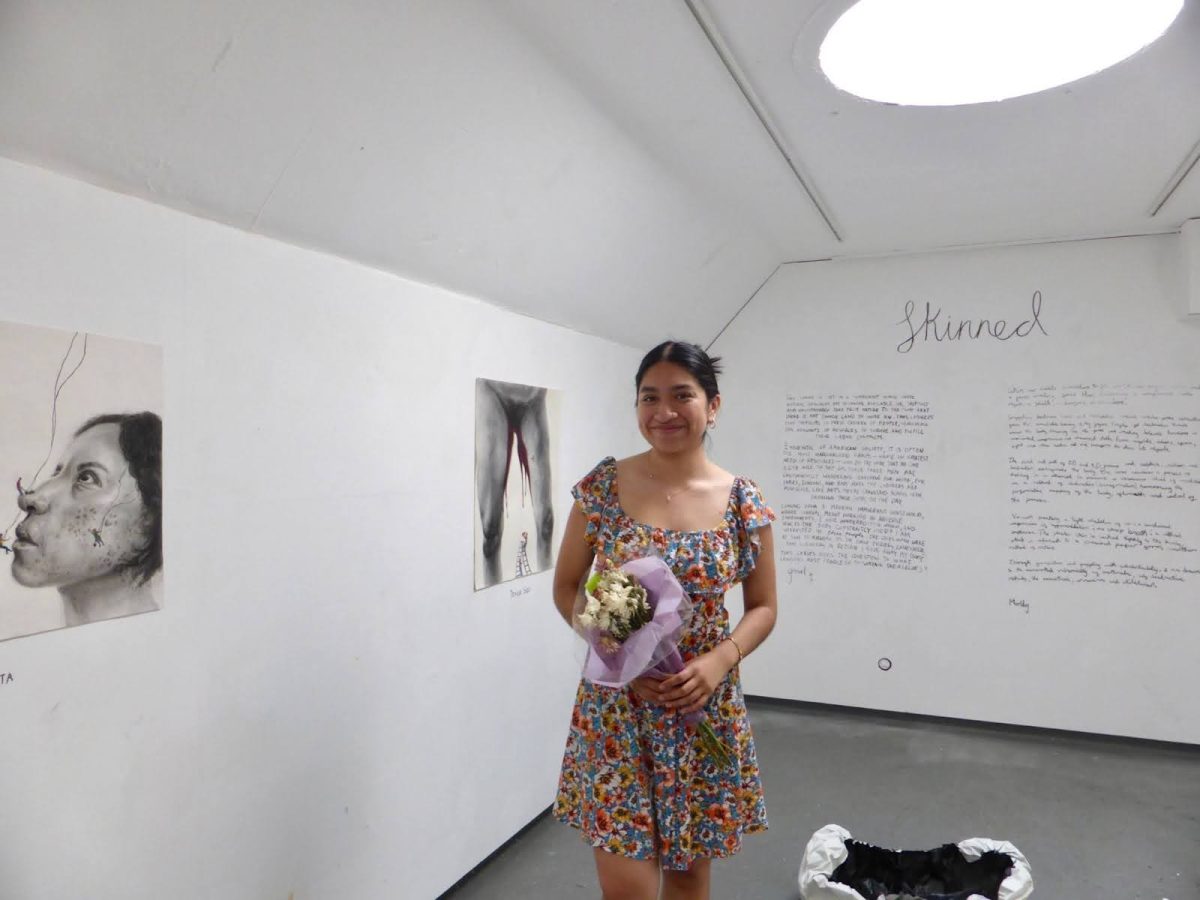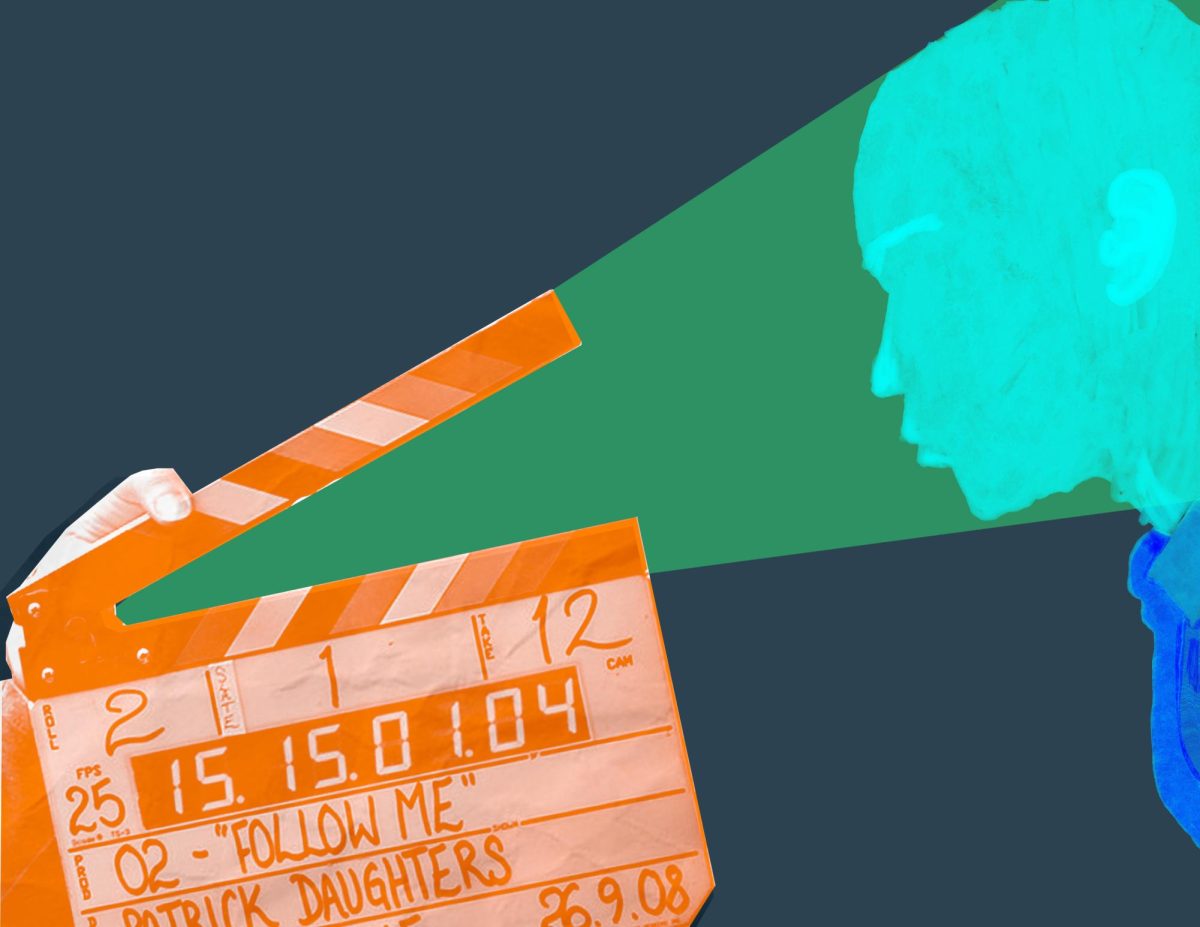Walking into the Spencer Studio Art Building on Sunday afternoon, I initially looked around, puzzled, not sure where to find the cryptic sound installation I was searching for. My confusion did not last for long, however, as I began to notice a low rumbling noise emanating from down the hallway.
Following signs printed with arrows on the walls and noticing the sound growing louder, I found my way to Spencer 112, where the artist – D. A. Mekonnen – was stationed outside. He briefed me quickly: Once inside the room, I was welcomed to take a seat on a meditation cushion or one of the chairs alongside the walls. The installation would last for three hours, from 3–6 p.m., and I was permitted to drop in and out of the room as I pleased. Entering into Mekonnen’s project, titled “Dragonchild,” I wasn’t exactly sure what to expect – a live performance, perhaps? What I was confronted with, however, was completely unlike anything I’d experienced before.
The room was pitch black, save for a few dimly lit colored lights illuminating a corner of the room. In the center of the room was a sort of pedestal, surrounded by glowing orbs. Around this centerpiece were meditation cushions, with many participants already seated. Scattered around the room were a few other seats. In the illuminated corner was a collection of various gadgets, among those a record player from which the music seemed to be coming.
Taking a seat along the edge of the room, I sat cross-legged and attempted to meditate as it seemed everyone else was doing. The sounds being played struck me as a layering of many conflicting noises. Although not quite melodious to listen to, the resulting din this created had an underlying repetitive nature which became more calming as one grew acclimated to the volume; the only experience I could compare this to would be a mass meditation or chant.
After what felt like 20 minutes went by, I assumed that I’d experienced all that there would be, as the music didn’t seem to be changing. At that moment, however, the noise began to slowly fade into something new. And as the minutes went by, I’d find myself growing accustomed to whatever amalgamation of noises was being played – from the jazzy to the more crude – just for it to slowly but surely change into something new again. At one point, the light began to shift between colors as Mekonnen pulled out various vinyls by Black artists – The Miseducation of Lauryn Hill by Lauryn Hill, A Seat at the Table by Solange – and arranged them for participants to see.
Indeed, centering Black music is ultimately what “Dragonchild” means to Mekonnen, who is a first-generation Ethiopian-American and has an M.A. in ethnomusicology from Harvard. “‘Dragonchild’ collects and re-presents Black free music, free of charge, to people with ears,” his online description states. “‘Dragonchild’ asserts the invention of the saxophone in the previous Millennium in Afar, by dragons, forged in dragonfire … ‘Dragonchild’ questions the value of presenting art for free, when the ‘White’ people pervert its meaning, using it to falsely prove and justify physical and mental torture and enslavement. ‘Dragonchild’ asserts the immanence of Native, queer, Black, anti-hegemonic humanity. ‘Dragonchild’ seeks to build consent culture, the opposite of rape culture. ‘Dragonchild’ embodies the nonbinary future. ‘Dragonchild’ sees you.”
I admit, reading this description prior to visiting the installation itself, I was skeptical as to how all this could be manifested in a single art piece. And after seeing and experiencing it physically, I still am having trouble grasping the ways in which this piece accomplishes Mekonnen’s agenda. Regarding the “theft” of saxophone and the perversion of art, I could see hints of this in the almost corruption of classic jazz that was presented at moments. Nevertheless, how other parts of Mekonnen’s mission were fulfilled – such as “bill[ing] white supremacy for damages” – remained unclear to me.
Hearing from Assistant Professor of Music Corinna Campbell, however – a friend of Mekonnen’s and the one who brought him to campus – shed some light on the matter. “I’m teaching a survey course this semester on African music, and I knew I wanted to be able to offer students direct interaction with a musician or group,” Campbell said. “We discussed a few different possibilities, but the more he talked about ‘Dragonchild,’ the more it became clear that this was the option he was most excited about pursuing, and that it had a particular resonance with issues that we as a campus community have been struggling to address.”
She also stressed that this was a collaborative, interdepartmental effort, naming Douglas Paisley, Daniel Goudrouffe, Jonathan Myers, Don Harris and the sound engineers as having all worked together to make it a reality.
Perhaps if I’d been present for all three hours or had a deeper understanding of the history of Black music, the fulfillment of these intentions would have become more apparent to me. But regardless, what I did find in ‘Dragonchild’ was an unorthodox use of meaningful sound to create a shared mental and physical space, or, as Campbell articulated, a “really special and valuable space for reflection and affirmation of Black expressions and experiences. ‘Dragonchild’s’ presence on campus feels timely and important.”







